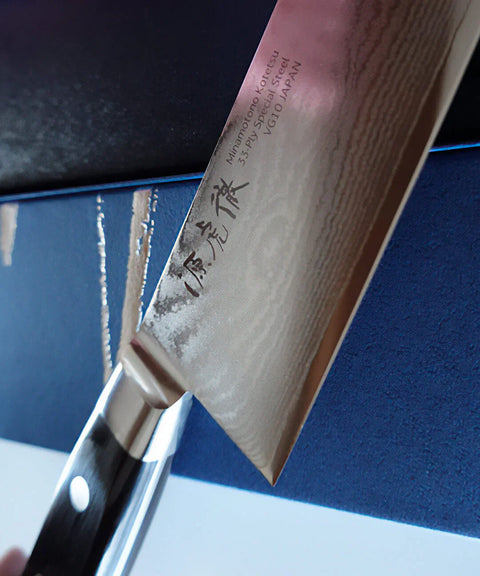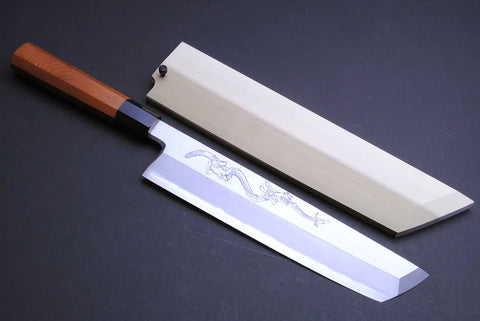
Japanese knives are precision tools designed to deliver clean, efficient cuts in the kitchen. However, misuse can shorten their lifespan and impair their performance. In this article, we'll explore the seven most common mistakes made when using these knives and how to avoid them to keep them in perfect condition.
1. Using them to cut inappropriate foods
One of the most common mistakes is using Japanese knives for tasks they're not designed for. For example, attempting to cut bones, frozen foods, or extremely hard foods with a Santoku or Gyuto knife can damage or even break the blade. For these tasks, it's recommended to use a specific knife such as a Deba fish knife or a Western butcher knife.
How to avoid it:
- Use each knife for the appropriate task.
- Avoid applying excessive force on hard materials.
2. Do not dry them after washing.
Japanese knife steel, especially those with high carbon content like Aogami or Shirogami , is more prone to rust if not properly dried after washing.
How to avoid it:
- Dry the knife immediately after washing with a dry cloth.
- Store in a ventilated place to avoid moisture build-up.

3. Wash them in the dishwasher
The dishwasher can be one of a Japanese knife's worst enemies. Heat, harsh chemicals, and contact with other utensils can damage the blade and handle.
How to avoid it:
- Wash knives by hand with warm water and mild soap.
- Dry them immediately after washing.
4. Not sharpening them properly
A poorly sharpened Japanese knife loses efficiency and can become dangerous, requiring more force to cut. Many users sharpen their knives with inappropriate tools, such as electric sharpeners or Western sharpening steels, which can damage the blade's fine edge.
How to avoid it:
- Use Japanese sharpening stones of appropriate grit.
- Maintain the correct sharpening angle (between 10° and 15° depending on the knife).

5. Using the wrong cutting board
Cutting boards made of glass, marble, or hard plastic can quickly dull the edge of Japanese knives. This is because these materials are too hard and cause microdamage to the blade.
How to avoid it:
- Use cutting boards made of soft wood such as Hinoki or Ginkgo .
- Replace rigid plastic boards with softer, more durable options.

6. Storing them improperly
Leaving knives loose in a drawer can cause them to bang against other utensils, causing nicks and unnecessary wear on the blade.
How to avoid it:
- Store knives in a sheath , magnetic holder, or wooden block.
- Avoid contact with other metal utensils.
7. Applying too much pressure when cutting
Japanese knives are designed to make smooth, precise cuts , not to apply excessive pressure to the food. Using them too forcefully can bend the blade or damage the edge.
How to avoid it:
- Let the edge do the work without forcing the cut.
- Use the appropriate cutting technique for each type of knife.
Conclusion
Avoiding these mistakes will allow you to enjoy the precision and efficiency of your Japanese knives for much longer. With proper maintenance and use, these knives become indispensable tools in the kitchen.
Do you have any questions about using your Japanese knife? Leave us a comment and we'll help you resolve it.









